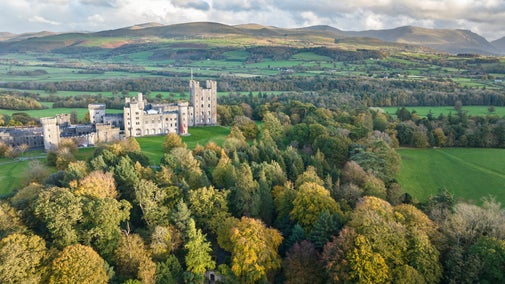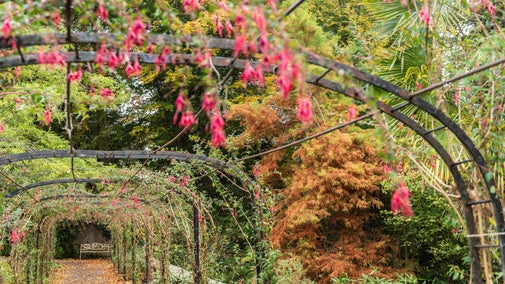
Donate
Everyone needs nature, now more than ever. Donate today and you could help people and nature to thrive at the places we care for.

Over recent years, a number of projects at Penrhyn Castle have helped to reduce its carbon footprint and work towards a more cost-effective and efficient way to heat the huge rooms of this vast mansion house on the hill.
In June 2016, Penrhyn Castle took the first steps in saying goodbye to oil-fuelled mansion houses in Wales, by breaking ground on a new Biomass Energy Project. The work formed part of a larger project which has already seen the installation of half an acre of solar panels, nearly a thousand LED light bulbs, and 7000m² of loft insulation at the castle.
Work began on building a new boiler-house and woodchip storage facility in preparation of replacing the old oil-fuelled system with a new biomass renewable heating system to heat the vast castle rooms by September 2016. Penrhyn Castle was the last National Trust mansion to use oil fuel in its heating system and the project saw an end to oil-powered systems of this kind anywhere in Wales.
Penrhyn Castle is a huge property, the largest in Wales and the third most expensive to keep in the whole of the National Trust. Finding a more efficient, environmentally sound and cost-effective way of heating it was essential to safeguarding the property for the future.

The project has had an environmental impact, saving 80 tonnes of CO2 emissions per year and has contributed to the National Trust’s target of sourcing 50 per cent of its energy from renewables by 2020. It has also directly benefitted the property financially in terms of operational costs.
The boiler uses locally sourced woodchip and woodchip harvested from Penrhyn Castle’s woodlands, in line with their woodland management policy, to heat the Castle.
As well as saving money and reducing CO2 emissions, the project also reduced the risks associated with oil storage by removing four large oil tanks once housed within the property.

A project at Penrhyn Castle in 2018 used heat recovery technology to extract heat from the waste water flowing out of the vast property's kitchens and recirculate it to warm the incoming cold water into the kitchen. This meant that the boiler had less work to do, saving energy and reducing greenhouse gas emissions.
The system which was installed at Penrhyn Castle is part of the National Trust’s involvement in the Dŵr Uisce project, a collaboration between Bangor University and Trinity College Dublin. Dr Prysor Williams, Dŵr Uisce project lead at Bangor University said that the project ‘could potentially make a considerable reduction in energy consumption at Penrhyn Castle, thereby lowering costs and reducing the carbon footprint of this extremely busy tourism attraction’.
The project was part of an Ireland-Wales Cooperation Programme between 2014-2020, supported by the European Regional Development Fund (ERDF).

Everyone needs nature, now more than ever. Donate today and you could help people and nature to thrive at the places we care for.

The European Regional Development Fund (ERDF) provides funding to public and private bodies in all EU regions to reduce economic, social and territorial disparities. The Fund supports investments through dedicated national or regional programmes.
The castle exterior hides an opulent and lavishly decorated interior. A much-loved home to the Pennant family, learn about some of the glorious rooms you can see on your visit.

Penrhyn Castle is the former home of the Pennant family built on the proceeds of the North Wales slate industry and sugar plantations in Jamaica.

Why not take a stroll off the beaten track and visit the hide down by the River Ogwen. Families will also enjoy the natural play area. Remember to bring your wellies.

Penrhyn’s grounds and gardens are extensive and a feast for the senses. Find peace in the formal Walled Garden or explore the jungle-like Bog Garden.

Visit the Castle Café for delicious lunches and tempting cakes whilst the shop offers a range of locally sourced gifts. Browse the second-hand books for a bargain.
